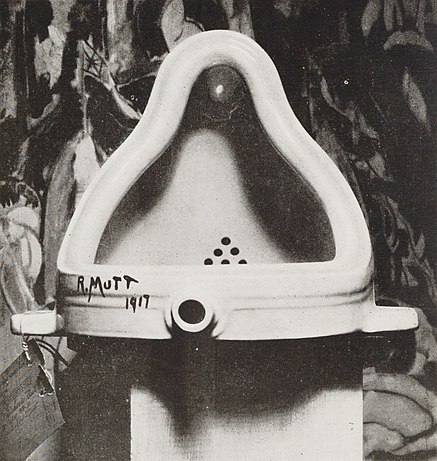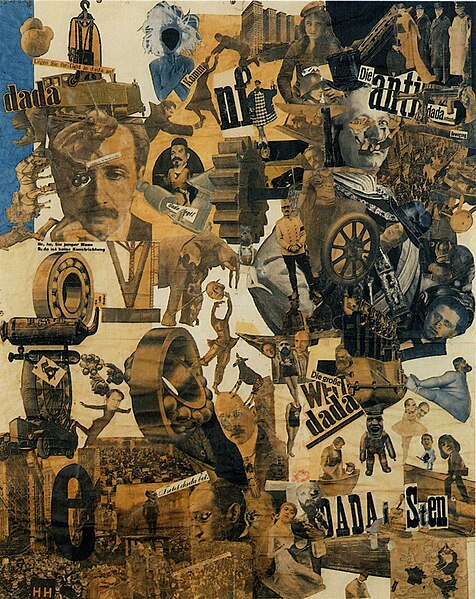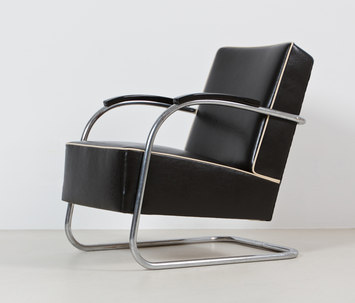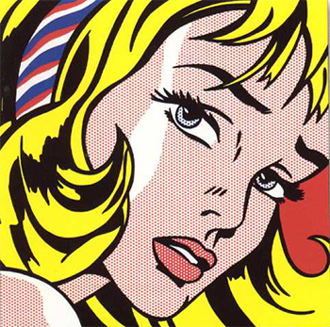Contextual Studies - 20th Century
Right Wing Ideology
Left Wing Ideology
Dadaism
The Birth of Modernism
Criticisms at the time were that all modernists were white, middle class, capitalist men. And that it was a form of Elitism or snobbery.
Notable Bauhaus Design
De Stijl – Dutch Modernism
Early Modernist Design
American Design Consultant
Film
1946 Bank of England , Coal & Aviation
1947 Electricity
1948 Gas & Railways
1949 Iron & Steel
(100 Years after The Great Exhibition)
A Larger, prestigious and considered exhibition – partly aimed to boost morale and to show what we could do in terms of building and design
Designed by Gerald Barry – ‘Modernism & Planning’
Together with a young design team – created a major exhibition on the South Bank in London
(a large badly bombed industrial area)
I don’t think it’s a wonderful building, but I think it is wonderful your country has a new building.
Frank Lloyd Wright
All seemed to represent the new atomic space age
(Scientific optimism)
A radical vision of what Britain could look like -
‘A brave new world’
Design and technology were now taken more seriously
The Cinema showed films in 3D with stereophonic sound
The toilets had soft toilet paper!
To the Independent Group American culture was:
Transient Witty
Expendable Sexy
Low Cost Gimmicky
Mass Produced Glamorous
Young Big Business
Richard Hamilton’s analysis of American Popular Culture
The above were despised by British intellectual conservatives and were interpreted as symptoms of cultural degeneration and commercial greed (vulgar and ‘bad taste’)
Pop Art
Dictionary of Art & Artists
The 60s
The Throwaway Aesthetic
Fashion provided the opportunity for
60s Design
The 70s
Up to now design had existed on two levels
1. Jand crafted / one off designs, for the wealthy - objects d' art
2. Mass production which usually means mass profit.
Vance Packard wrote a book called 'The Hidden Persuaders' attacking the American system of advertising.
The Death of Modernism & The origins of Postmodernism
90s:
Instead of pets people had small balls of plastic
It was now possible to simulate killing people for fun
and manny silly crazes
1915-1945
Important Facts
- The Great War and the Spanish Flu pandemic (1918) had caused havoc throughout europe
- The Great Depression after the Wall Street Crash in America 11 years later in 1929
- Germany was on a dangerous path of right wing and racist tendencies after Hitler came to power in 1933
- There was a feeling of distrust and suspicion from western capitalist countries towards Russia.
- And yet in the midst of all this misery and instability Modernism was beginning to flourish.
 |
| This "toilet seat" shows socio-political history and ideology in the 20th century |
- Law of the jungle, only the strong survive.
- In it's most extreme form it is racist, elitist, white suprematist and aryan. eg. Nazi's, BNP
- Capitalism, entrepreneurs and risk takers make money in the stock market and from employing people.
- Only strong and robust companies and workforces survive
- A sharing of resources amongst all, companies essentially co-operatives.
- Socialism, and the more extreme form: Communism - a belief that private ownership should be abolished and all work and property should be shared amongst all.
- Which sounds nice but in extreme cases means the state controls all aspects of life.
A responce to the "morrally corrupt" western world after the war.
Dadaism pokes fun at modern life and culture and sees these things as a joke.
Dada is french for hobby horse an also could be seen as resembling baby talk, although the name was chosen sepcificly to make no sense at all.
Dadaism was satirical, whitty, rude and very infuential.
 |
| Perhaps the most famous dada art, Fountain signed R. Mutt caused much controversy. |
 |
| Collage by Hannah Hoch |
- The industrial revolution with huge advances in technology including mechanization which lead to advances in weaponry that in turn caused the biggest mass slaughter the world had ever seen.
- Despite this terrible killing spree that was the second world war people were not put of modernisation, in fact they embraced it, celebration what humanity could achieve.
- A reaction to the over the top decorative Art Nouveau
- Plain geometric forms over ornamentation
- Form follows function - Bauhaus
- Simplicity and eventually minimalism
- Reason/logic/truth
- Conclusions and outcomes very important
Bauhaus
Walter Gropius greatly affected by the war wanted to make a school where industrial methods and technology were used for creative and social practises not destructive ones.
He believed that the decoration of buildings was the most noble form of fine art, and greatly believed in the importance of crafts and hands on work. As is stated in the Bauhaus Manifesto.
'Let us desire, conceive and create the new building of the future together'
 |
| The Bauhaus building |
 |
| Walter Gropius's house |
 |
| The Bauhaus curriculum combine theoretical education and practical training in the workshops |
Notable Bauhaus Design
 |
Poster Art by El Lissitzky |
 |
| Double Portrait - Moholy Nagy |
 |
| Alma Buscher, 'Ship' Building Toy |
 |
| Another piece by Moholy Nagy |
 |
| Bauhaus Kitchen |
 |
| Wilhelm Wagenfeld - table lamp |
De Stijl – Dutch Modernism
•New,
utopian ideal of spiritual and physical harmony and order
•Advocated
pure abstraction – only essential form and colour
•Primary
colours plus
black and white
•Simplified
visual compositions of the vertical and horizontal, squares and rectangles
 |
| Piet Mondrian: Composition with Gray and Light Brown |
 |
| Theo Van Doesburg - Opus 18 |
 |
| Werksentwurf Mücke-Melder |
Art Deco
•Art
Deco differed from other Modernist movements in that it’s aim was decorative
rather than functional and minimalist, and lacked a manifesto on social
philosophies. However, the structure of Art Deco forms are based on
mathematical geometric shapes.
•It is
an eclectic style of elegant and glamorous modernism. Eclectic in terms of its
influences: neo-classicism, constructivism and shows elements taken from
Egyptian and Aztec forms.
•Started
in Paris in the 1920s it flourished internationally in
the 30s.
 |
| Empire State & Chrysler Building |
 |
| art deco shell chair |
American Design Consultant
 |
| Raymond Loewy with his steam locomotive |
The Futurist Film Manifesto states 'the importance of people and the significance of the everyday' which i think really stands out.
Here is a photo of death in Ingmar Bergman's film The Seventh Seal, which is extremely stylized and modern, it's like satan designed by bauhaus
- Rationing: almost all factory production was concentrating on the war – lots of things were in short supply (food & other household goods)
- Clothing rationing began 1st June 1941
- Clothes bought from shops were designed to use as little material as possible…
- Women were encouraged to repair and remake old clothes. Old curtains were cut up to make skirts and dresses. Unwanted jumpers were unraveled and knitted into something else
- Make-up and stockings were hard to come by. Some would draw a line down the back of the legs, other’s would use gravy browning to stain the legs…
Deaths – World War 2
- Russia – 27 million (12 military, 15 civilian)
- Germany – 5.69 million (3.25 military, 2.44 civilian)
- GB – 495k (403k military, 92k civilian)
- USA – 413k (407 military, 6k civilian)\
As you can see many more Russians were killed than anyone else, so it's not surprising that they tried to create some kind of protection to make sure it didn't happen again. This was called the Iron Curtain made up of the buffer states bordering on russia which include Poland, Hungary, Romania and others.
An uneasy balance of power built up between the east and the west mainly based on distrust from both sides which led to MAD (Mutually Assured Destruction).
Reconstruction
 |
| The Marshall Plan |
Whilst this was nice, Britain had spent all its money on the war and was left with a grey and dismal country where nothing new was built and rationing still carried on.
Nationalisation
1946 Bank of England , Coal & Aviation
1947 Electricity
1948 Gas & Railways
1949 Iron & Steel
The Festival of Britain 1951
A Larger, prestigious and considered exhibition – partly aimed to boost morale and to show what we could do in terms of building and design
Designed by Gerald Barry – ‘Modernism & Planning’
Together with a young design team – created a major exhibition on the South Bank in London
(a large badly bombed industrial area)
 |
| Robert Matthew - Royal Festival Hall |
I don’t think it’s a wonderful building, but I think it is wonderful your country has a new building.
Frank Lloyd Wright
All seemed to represent the new atomic space age
(Scientific optimism)
A radical vision of what Britain could look like -
‘A brave new world’
Design and technology were now taken more seriously
The Cinema showed films in 3D with stereophonic sound
The toilets had soft toilet paper!
To the Independent Group American culture was:
Transient Witty
Expendable Sexy
Low Cost Gimmicky
Mass Produced Glamorous
Young Big Business
Richard Hamilton’s analysis of American Popular Culture
- Hollywood Movies
- Commercial Television (1955)
- Glossy Magazines
- Consumer Goods
The above were despised by British intellectual conservatives and were interpreted as symptoms of cultural degeneration and commercial greed (vulgar and ‘bad taste’)
Pop Art
'Pop Art is based on the acceptance and use of artifacts,
mass advertising and press media, and products of modern life:
Popular Culture as valid art forms in themselves, and,
subjected to various transformations which increase their impact without destroying the character,
as material for further artistic reaction.'
Dictionary of Art & Artists
Babyboom
1955 6% of population Teenagers
1964 10% of population Teenagers
There were huge contrasts in aspirations and style between different generations
Notable Design from 1945-1960
 |
| Ernest Race - Antelope Chair |
 |
| Arne Jacobsen - Cutlery |
 |
| Christian Dior - 'New Look' |
 |
| MoMA New York - Room |
We begin to see styles that are far removed from
High/Classical Modernism, which was often austere, towards a more playful and colourful design aesthetic.
Are we seeing the beginnings of Postmodernism?
The 50s is often remembered as a ‘grey’ period.
Maybe this is wrong…
 |
| Seagram Building - Mies van der Rohe 1954-8 |
 |
| Personal TV - RCA Victor |
 |
| pink cadillac |
The 60s
 |
| JFK assasination |
 |
| Martin Luther King assassination |
 |
| Bobby Kennedy assassination |
 |
| The Vietnam War |
 |
| Manny Protests |
Despite this, the 60s was essentially a decade of hope, excitement, aspiration, change and above all a ‘changing of the guard’ – youth was taking over!
Then the space race began with Russia winning the race for first man in space
Shortly followed by the USA with the first man on the moon
 |
| The Beatles |
The Throwaway Aesthetic
'expendable and transient, popular with the young, witty, gimmicky and sometimes sexy, mass produced and very low cost'
Richard Hamilton
Youth Cultural Design
'One day Carnaby Street could rank with the Bauhaus as a descriptive phase for a design style or legend.'
Design Magazine 1966
| Transistor Radio Which would lead to the walkman, the CD player and eventually the iPod |
• experimentation
• revolution
• a strong code of identification
Print
 |
| OZ magazine is great cheers for the heads up chris |
 |
| Peter Blake and Jan Howarth |
60s Design
 |
| habitat - young people liked it |
 |
| classic 60s chair |
Up to now design had existed on two levels
1. Jand crafted / one off designs, for the wealthy - objects d' art
2. Mass production which usually means mass profit.
Vance Packard wrote a book called 'The Hidden Persuaders' attacking the American system of advertising.
"Advertising analysed the psychological make-up of individuals
just to prey upon their weakness’ and defects."
After the height of consumerism of the 60s, attacks on this system began to occur whcih led to the Anti Consumerism Campain and Buy Nothing Day.
"Isn’t it too bad that so little design, so few products are really relevant to the needs of mankind? Watching the children of Biafra dying in living colour while sipping a frost-beaded martini can be kicks for lots of people, but only until their town starts burning down. To an engaged designer, this way of life, this lack of design, is not acceptable."
Papanek
After this realisation that peoples needs weren't being properly considered in design a number of designers came up with some extremely useful and necessary products, here are a few:
 |
| The Neater Eater - London Innovations Ltd. |
 |
| India Solar Cooker - National Institute for Design |
 |
| this and below: Radio receiver for the third world -Papanek & Seeger |
 |
| Wheelchair Gym - London Innovations Ltd. |
 |
| Ergonomics and Anthropometrics, for designers - Henry Dreyfuss |
The Death of Modernism & The origins of Postmodernism
Brutalism
Uses big chunky shapes, exhibits the structure and values raw untreated materials.
Postmodernism
- Return of ornament and wit
- Rejection of strict rules, room for experimentation
- Not afraid to reference past styles
- Chaos over order, there are no answers
- Nihilism an extreme form, lifes a joke
- A move away from big 'commercial' religions such a christianity towards older spiritualism like astrology, tarot etc.
"To this day I would define Postmodernism as double coding: The combination of modern techniques with something else (usually traditional building) in order for architecture to communicate with the public and a concerned minority, usually other architects."
Charles Jenks
Some examples:

G Plan Basket Chair

Drivers watches
Punk
"Many regard Punk as an evil phenomenon … But in the decorative arts, I cannot help regarding it as something fresh and hopeful … When I walk along the King’s Road and see that young people have had the sheer courage to turn themselves into walking works of art with pink and green hair, with weird tattoos and even weirder make-up on their faces, then I feel there is hope for the arts. Good art can only begin by an act of Bad Taste – a shocking breach with the conformist past."
Bevis Hillier (Paper to Preston Polytechnic, 1979)
The 80s and 90s
New romantics

Adam Ant

Robert Smith

Spawn of Satan
90s:
"To this day I would define Postmodernism as double coding: The combination of modern techniques with something else (usually traditional building) in order for architecture to communicate with the public and a concerned minority, usually other architects."
Charles Jenks
Some examples:
 |
| G Plan Basket Chair |
 |
| Drivers watches |
Punk
"Many regard Punk as an evil phenomenon … But in the decorative arts, I cannot help regarding it as something fresh and hopeful … When I walk along the King’s Road and see that young people have had the sheer courage to turn themselves into walking works of art with pink and green hair, with weird tattoos and even weirder make-up on their faces, then I feel there is hope for the arts. Good art can only begin by an act of Bad Taste – a shocking breach with the conformist past."
Bevis Hillier (Paper to Preston Polytechnic, 1979)
The 80s and 90s
 |
| Adam Ant |
 |
| Robert Smith |
 |
| Spawn of Satan |
Rave culture begun and everyone was taking e's
It was now possible to simulate killing people for fun
and manny silly crazes
The mobile phone came into existence as a bulky chunk of plastic and changed our lives forever!
not forgetting this little 'must have'









































